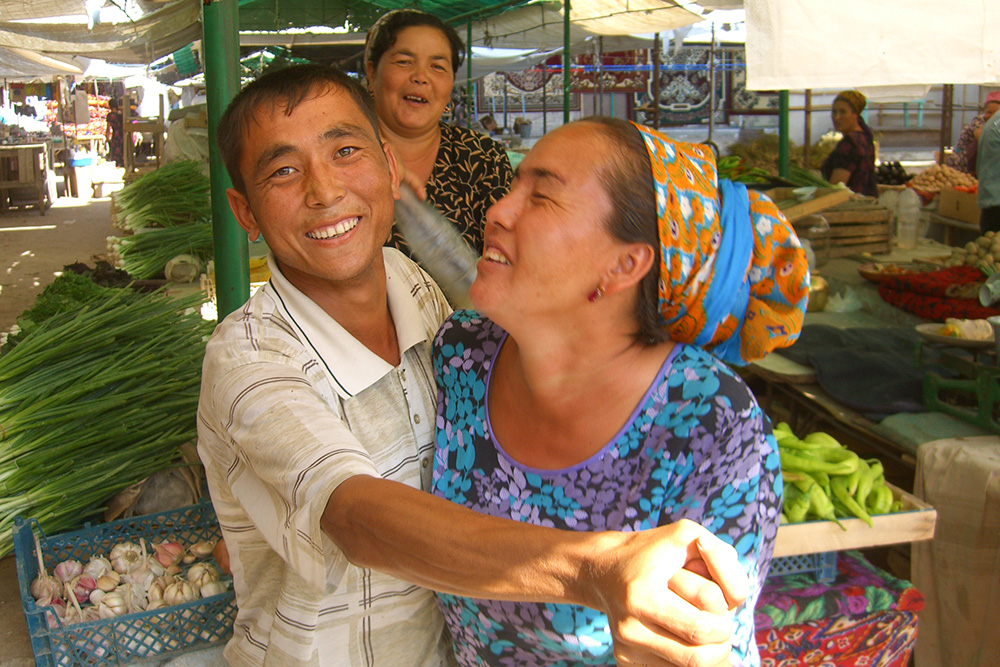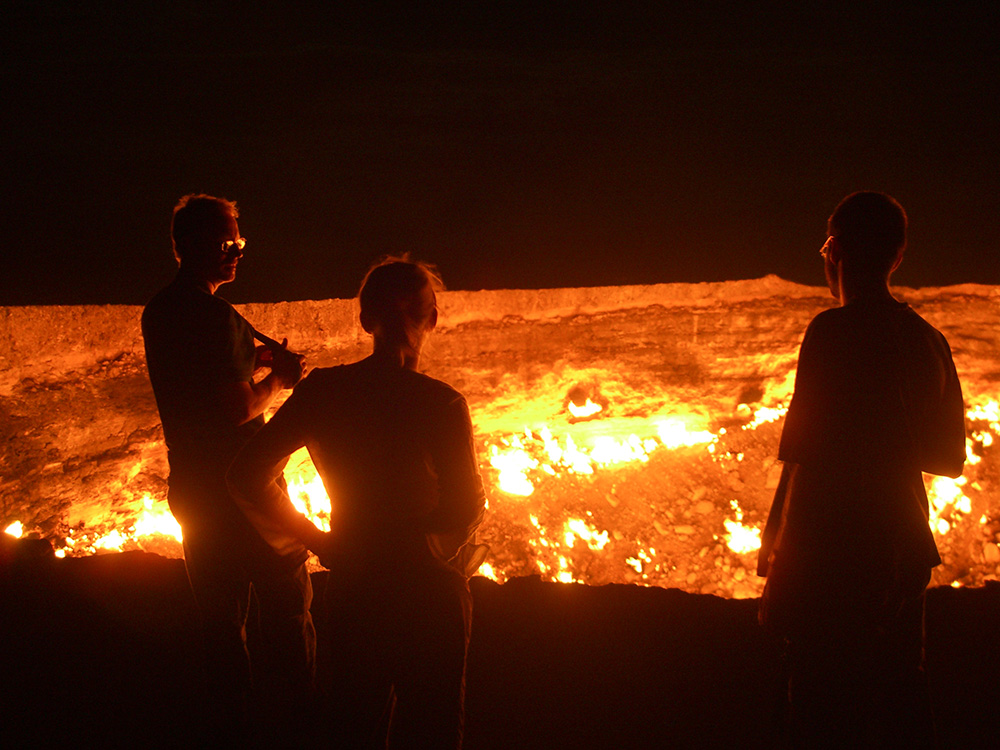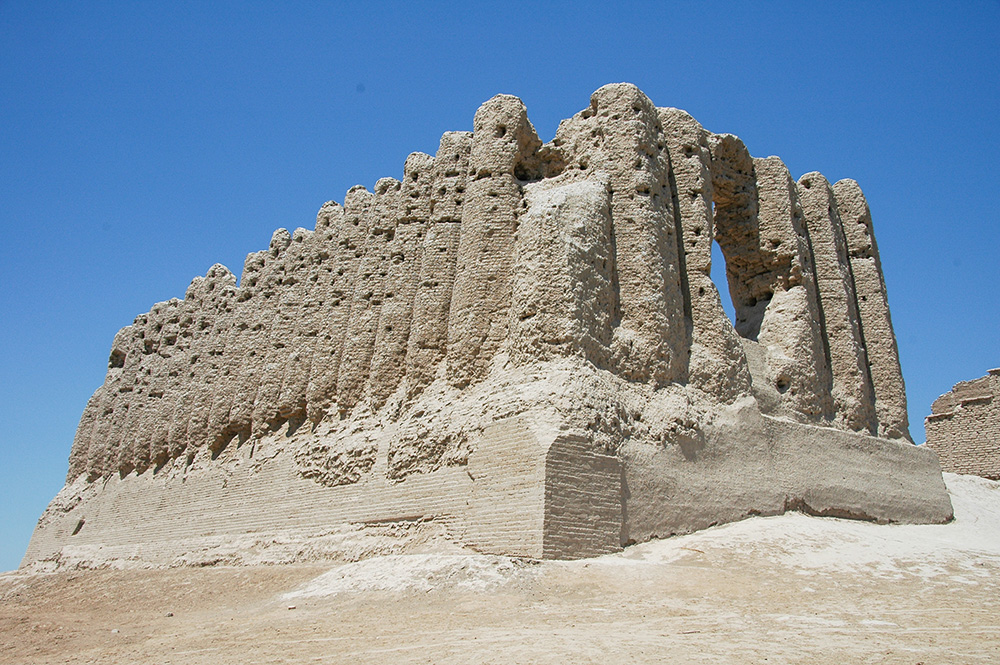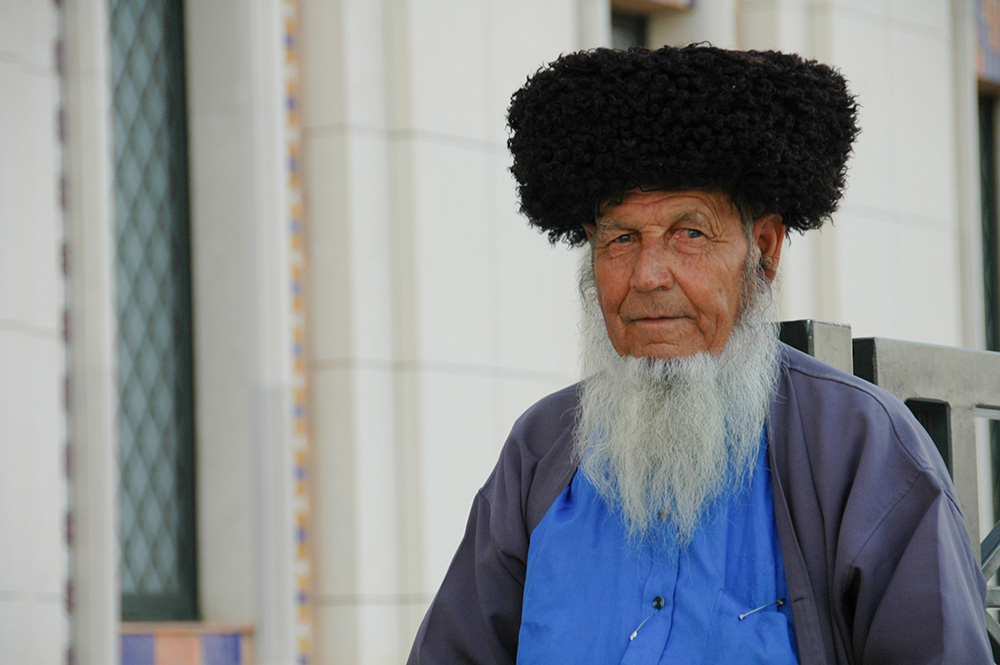Turkmenistan, a place where a funky post-Soviet hangover meets the eccentricities of a totalitarian former president. Blend all of this with Silk Road history, traditional nomadic culture, and the glistening white marble capital of Ashgabat, and you have the least known and visited of all the Central Asian countries.
Turkmenistan is just one of those places: fantastical and puzzling, it maintains an element of surprise. Something unexpected lurks around every corner.
To help understand a bit more about this offbeat destination and why it’s worth a visit, here are nine unusual facts about Turkmenistan to put the country in context:
1. Turkmenistan is one of the least-visited countries in the world
Although recent and reliable visitor numbers are a bit hard to come by, Turkmenistan remains one of the least-visited countries in the world, counting only 8,900 visitors in 2012. As you’ll see below, that’s not due to the lack of things to do and see there.

Although Turkmenistan doesn’t get many visitors, local people are very friendly and have fun engaging with travellers.
Instead, the low tourist numbers are due to a complicated visa regimen which makes it difficult to obtain all the appropriate paperwork. (Note: if you are on one of the G Adventures tours in Turkmenistan, your visa support is included as part of the tour).
2. Turkmenistan is 70% desert
Travel across Turkmenistan and you’ll encounter a lot of sand. Desert and sand are the prominent geographical feature as the majority of the country is home to the vast Karakum Desert. What’s remarkable, difficult to imagine, and central to comprehending the country’s geologic history is that its entire area was home to a giant sea 30 million years ago.

Sunset over the Karakum Desert in Turkmenistan.
Today, you can still find remnants of this ancient during your desert walkabouts. Keep your eyes open for nautilus fossils and perfectly round, cannonball-like natural stone forms called concretions, self-contained time capsules whose interiors reveal well-preserved sea fossils.
3. The Darvaza gas crater is a man-made mistake
One of the biggest draws for travellers in Turkmenistan, the Darvaza gas crater, burns continually in the middle of the desert. Also known as the “gate of hell,” the gas crater really does lend the feeling of staring into hell, particularly at night when its red flames flare up against the blackness of the desert night.

Feeling the heat from the never-ending flames of the Darvaza gas crater.
Although the gas crater may appear a natural phenomenon, it is actually the result of a mistake made by a group of Soviet geologists who were drilling for natural gas in 1971. After their equipment and transport fell into the hole and gas began escaping, they opted to light it on fire, imagining it would take only a few days to burn off. Considering that the crater still burns over 48 years later, you could say their calculation of available subterranean gas was a bit off.
4. Turkmenistan is home to several Silk Road cities (and UNESCO sites)
Although Turkmenistan’s Silk Road sights may not be as famous as those of its neighbour, Uzbekistan, they are impressive in a unique, authentic and undisturbed way. Together, they form a thread of the fascinating story about the role this region played as a trading centre along the Silk Road between the 8th to 13th centuries.
With an estimated million people in 11th-12th centuries, Merv was the largest of the Silk Road urban centres, surpassing the size and importance of now-famous Bukhara and Samarkand in Uzbekistan. This oasis city was also the capital of the Great Seljuk state until it was sacked by Genghis Khan and his Mongol army in 1221 and never fully recovered.

The ruins of Greater Kyz Kala, the largest of the fortress residences in Merv.
Kunya-Urgench, a Silk Road City on the border with Uzbekistan and also a UNESCO site, was a site of culture, learning and prominence during the 11th and 12th centuries. It was once the 2nd largest city in the Samanid Empire and featured a distinct architectural style which can still be found in places like Iran and Afghanistan today. It was rebuilt in the 13th century after it rebelled against and was destroyed by the Mongols, only to be destroyed again by Tamerlane in the 14th century as he feared it a competitor to Samarkand.
Today, the ruins and remains of these two cities are a tiny fraction of what once existed hundreds of years ago. Intriguingly, they are still being explored and excavated. When you visit, you’ll feel a bit like an archaeologist trying to fit together pieces of history.
5. You can always tell a Turkmen man by his telpek
Turkmen people are descended from the nomadic Oghuz tribes that moved into this region in the 7th century. Even today, Turkmen people still associate themselves with five main nomadic tribes. One of the signs of this nomadic tradition and culture is the telpek, a large sheepskin hat, worn by men. As with other similar nomadic headwear found elsewhere in Central Asia, the telpek is designed to maintain a stable body temperature throughout different types of weather, from the hot summer days to the cold winter nights of the desert.

A Turkmen elder wears his telpek, a hat for all seasons.
6. Ashgabat, the capital city, is in the Guinness Book of World Records
Turkmenistan’s capital city unique “Las Vegas meets Pyongyang” look comes from its grand boulevards, fountains, grandiose statues, and glistening white buildings. This is all thanks to the building boom initiated by former President Saparmurat Niyazov (aka, Turkmenbashi) after the country gained independence from the Soviet Union in 1991.

The glistening marble capital city of Ashgabat.
The central part of the city, flush with massive structures and elaborate public spaces literally shines in the hot desert sun thanks to being built primarily in white marble. In fact, so much marble was consumed in the construction of the city, the Guinness Book of World Records has awarded Ashgabat the prize of having the highest density of marble buildings in the world. Like much of Turkmenistan, the sight of it all can border on the surreal and amount to something you couldn’t quite imagine if you didn’t see it for yourself.
7. Plov is the favourite dish in Turkmenistan
Composed of mounds of rice mixed with meat, carrots, and spices fried in a large pan, plov (which is like a pilaf) can be found everywhere in Turkmenistan — from intimate family picnics at sacred sites to grand wedding celebrations. Turkmen hospitality is such that if a family sees that you don’t have food with you, they will typically offer you a plate of their plov to share.
And it’s delicious!

A young woman offers us a plate of plov for lunch at a local pilgrimage site.
8. Turkmen melons are so famous and sweet, they have their own national holiday
It’s hard to believe that such a dry and arid country can produce melons so sweet, juicy and large. Indeed, Turkmen melons are so highly regarded that they’ve garnered their own national holiday. Having once supplied much of the Soviet Union, Turkmenistan’s melons are famous throughout the region.
Today, it’s hard to find Turkmen melons outside of the country. However, if you plan your visit to Turkmenistan to overlap with the 2nd Sunday in August you’ll be able to enjoy melons to your heart’s (or your stomach’s) delight on the official Melon Day national holiday.
9. The land of unusual laws
President Saparmurat Niyazov, the first president of Turkmenistan from 1991-2006, was well known — notorious perhaps — for having conceived of a string of unusual laws passed during his tenure. Some of these laws were rationalized under the premise of trying to preserve traditional Turkmen culture. For example: no opera, gold teeth or spandex.
Yes, you read that correctly.
Other laws were merely based on the whim of a president with full power and control. For example, enacting a law changing the names of the days of the week to match the names of the members of his family. Or banning smoking in public because he was trying to quit smoking and didn’t want to see other people during his personal struggle.
While many of these laws were changed back once the current president, Gurbanguly Berdimuhamedow, came to power, some still remain. And new ones emerged. For example, black cars are now forbidden in Turkmenistan in favour of white cars because white is a colour that “brings good luck.”
So, when you visit Turkmenistan, take it all in. And ask for the story behind it.
Getting there
Check out our Best of Uzbekistan and Turkmenistan tour here.























